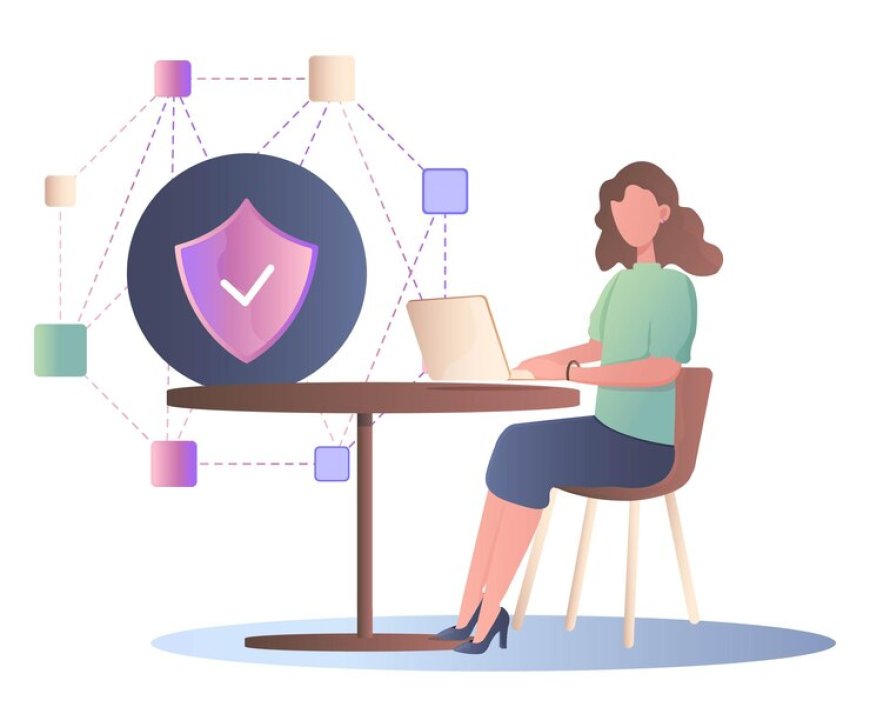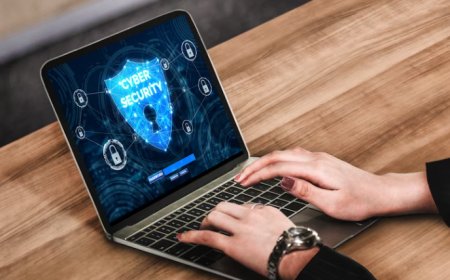Physical Security In The Cyber Security
Discover how physical measures and access control play a vital role in safeguarding sensitive information and digital assets

In the context of cyber security, physical security refers to the measures and practices implemented to protect the physical assets, facilities, and infrastructure that are critical to the security and operation of an organization's digital systems. It involves safeguarding physical access points, preventing unauthorized entry, and mitigating risks related to physical threats such as theft, damage, and sabotage. Physical security plays a crucial role in ensuring the overall security and resilience of an organization's cyber environment.
Importance of Physical Security in Cyber Security
-
Physical security acts as the first line of defense against unauthorized access to critical systems and sensitive data.
-
It safeguards against physical threats such as theft, vandalism, and sabotage that can compromise the integrity and availability of digital assets.
-
Physical security measures help mitigate the risk of insider threats by controlling access to physical areas and assets.
-
It ensures the protection of hardware components, servers, data centers, and other infrastructure that support digital systems.
-
Physical security enhances overall cyber security posture by complementing technical controls and providing a layered defense approach.
Common Physical Security Measures in Cyber Security
To ensure robust protection against physical threats in the context of cyber security, organizations often implement the following measures:
-
Restricting access to physical areas, systems, and assets through measures like key cards, biometric authentication, and strong passwords.
-
Utilizing CCTV cameras, motion sensors, and alarm systems to monitor and detect unauthorized activities or breaches in physical security.
-
Implementing fences, locks, gates, and security guards to control and secure the physical boundaries of an organization's premises.
-
Educating employees about physical security best practices, such as the importance of locking workstations, reporting suspicious activities, and maintaining the confidentiality of access credentials.
By implementing these physical security measures, organizations can enhance their overall cyber security posture and mitigate the risk of physical threats that could compromise their digital assets and systems.
Integration of Physical and Cyber Security
Collaborative approach between physical and cyber security teams:
Promoting collaboration and communication between physical security and cyber security teams to ensure a holistic and coordinated approach to security. This includes sharing information, conducting joint risk assessments, and aligning security strategies.
Physical security considerations in network design and infrastructure:
Incorporating physical security measures into the design and implementation of the network infrastructure. This includes securing server rooms, data centers, and network endpoints against physical threats, such as unauthorized access or tampering.
Incident response and coordination between physical and cyber security incidents:
Establishing protocols and procedures for responding to security incidents that involve both physical and cyber components. This includes integrating incident response plans to address incidents that may have both digital and physical consequences.
By integrating physical and cyber security efforts, organizations can effectively address vulnerabilities and threats from both the digital and physical realms, enhancing overall security posture and protecting critical assets and infrastructure.
Emerging Technologies in Physical Security for Cyber Security
Biometric authentication and access control systems:
Leveraging biometric technologies such as fingerprint, iris, or facial recognition for secure access control to physical areas, ensuring only authorized individuals can enter restricted spaces.
Video analytics and artificial intelligence for threat detection:
Utilizing advanced video surveillance systems with analytics capabilities and AI algorithms to detect suspicious activities, unauthorized access attempts, or abnormal behavior, enhancing the early detection of potential security threats.
Physical security automation and remote monitoring:
Implementing automation and remote monitoring solutions that enable real-time monitoring of physical security systems, such as alarms, video cameras, and access control systems. This allows for proactive threat response and remote management of security infrastructure.
By embracing these emerging technologies, organizations can enhance the effectiveness and efficiency of their physical security measures, improving overall cyber security defenses and better safeguarding critical assets and sensitive information.
Compliance and Regulatory Considerations
Industry-specific regulations and standards:
Understanding and complying with industry-specific regulations and standards that address physical security requirements in the context of cyber security. This may include regulations such as the Payment Card Industry Data Security Standard (PCI DSS) for the payment industry or the NIST Cybersecurity Framework for various sectors.
Data protection and privacy requirements:
Ensuring compliance with data protection and privacy regulations, such as the General Data Protection Regulation (GDPR) or the Health Insurance Portability and Accountability Act (HIPAA). These regulations often include provisions related to physical security measures to protect sensitive data.
Physical security audits and assessments:
Conducting regular audits and assessments of physical security measures to identify vulnerabilities, gaps, and areas for improvement. These audits may involve physical inspections, vulnerability assessments, or penetration testing to evaluate the effectiveness of existing controls.
Compliance with applicable regulations and adherence to best practices in physical security are crucial for organizations to mitigate risks, protect sensitive data, and maintain trust with stakeholders.
Challenges and Considerations in Physical Security for Cyber Security
Balancing security and convenience in physical access controls:
Finding the right balance between implementing robust physical access controls and ensuring convenience for authorized personnel. It involves designing access control systems that are secure, user-friendly, and efficient, considering factors such as authentication methods, user experience, and workflow requirements.
Addressing the evolving threat landscape:
Staying vigilant and adapting physical security measures to address emerging threats and tactics employed by attackers. This includes continually monitoring and assessing risks, updating security protocols and technologies, and fostering a proactive security culture that emphasizes threat awareness and response.
Securing remote and distributed work environments:
With the increasing trend of remote work and distributed teams, ensuring the physical security of endpoints and devices used by employees becomes crucial. Organizations need to implement measures such as secure remote access protocols, device encryption, and remote device management to protect against physical threats in remote work environments.
Best Practices for Physical Security in Cyber Security
-
Implement multi-factor authentication for physical access control.
-
Install surveillance cameras and monitoring systems to deter and detect unauthorized access.
-
Establish clear policies and procedures for visitor management and badge issuance.
-
Regularly assess and update perimeter security measures, such as fences, gates, and locks.
-
Conduct security awareness training to educate employees about physical security risks and best practices.
-
Regularly review and update physical security protocols in line with emerging threats and industry standards.
-
Implement secure storage and disposal practices for sensitive physical assets, such as backup tapes or physical documents.
-
Establish an incident response plan that includes procedures for addressing physical security incidents and coordinating with cyber security incident response.
-
Conduct regular physical security audits and assessments to identify vulnerabilities and gaps in the security infrastructure.
-
Foster a culture of security awareness and accountability throughout the organization, encouraging employees to report suspicious activities and adhere to physical security policies.
Physical security plays a crucial role in ensuring the overall effectiveness of cyber security measures. It protects against physical access threats, mitigates insider risks, and enhances the security of critical infrastructure and systems. Organizations must recognize the importance of integrating physical and cyber security efforts, adopting emerging technologies, and complying with industry regulations. By implementing best practices such as access controls, surveillance systems, and security awareness training, organizations can enhance their physical security posture. Looking ahead, it is essential to stay abreast of evolving threats and trends in physical security to effectively safeguard against cyber risks.





































